If you’re unfamiliar with Northern Ireland, from how it’s different to the Republic of Ireland to what there is to see and do, this guide will get you up-to-speed fast.
Home to colourful political murals, soaring mountains, gorgeous coastlines, the Titanic’s birthplace, Game of Thrones filming locations and the world’s oldest whiskey distillery – Northern Ireland’s a magnificent corner of our island.
However, it’s also a place that can cause some confusion to visitors. We will demystify everything in the guide below.
Some quick need-to-knows about Northern Ireland

Photos via Shutterstock
1. It’s both part of Ireland yet separate
While Northern Ireland may be on the island of Ireland, it’s officially part of the United Kingdom (and has been that way for over a century). The border is open and easy to cross, but note that you’re entering an entirely different country when you do.
2. Differences between NI and ROI
Though the landscapes of Northern Ireland and the Republic of Ireland are largely the same from a visual point of view, when you cross the Northern Irish border, you’ll be using pound sterling rather Euro. You’ll also notice that the road signs have changed to miles instead of kilometres.
3. Counties of Northern Ireland
Antrim, Armagh, Down, Fermanagh, Derry/Londonderry and Tyrone make up the six counties of Northern Ireland and they’re all part of the historic province of Ulster. The most populous of these is Antrim (thanks mostly to Belfast), while Fermanagh is the least populous. By area, Tyrone is the largest and Armagh is the smallest.
4. Home to endless things to do
As we mentioned in the intro, there’s endless things to do in Northern Ireland! From the majesty of the Mourne Mountains in the south to the coastal charm of Portrush in the north with the colour and history of Belfast in between, there’s tons to do here and that’s just scratching the surface.
A speedy history of Northern Ireland

Photos via Shutterstock
When we say speedy, we mean speedy. The paragraphs below are intended to get you up-to-speed on Northern Irelands turbulent past in 60 seconds.
For a more detailed account, see our guide to Northern Ireland vs Ireland, which delves more into everything from the partition to the Troubles.
Partition
Northern Ireland was partitioned from the rest of Ireland in the aftermath of the 1916 Easter Rising and the end of the First World War.
The Anglo-Irish Treaty of 1921 formally gave the 26 counties of Southern Ireland their independence (eventually becoming the Republic of Ireland), but the Parliament of Northern Ireland opted to stay part of the United Kingdom and it’s been that way for over 100 years.
The Troubles
The Troubles was the 30-year sectarian conflict in Northern Ireland that saw a huge amount of violence. Over 3,500 people lost their lives.
It lasted from roughly 1969 until the signing of the Good Friday Agreement in 1998.
Present day
These days Northern Ireland is a far more harmonious and welcoming place and embraces its past with honesty and reconciliation.
To see what I mean, check out one of the fascinating taxi ride tours through the Shankhill and Falls Roads in Belfast!
The 6 counties of Northern Ireland

Photos via Shutterstock
The counties of Northern Ireland are home to a wealth of history, natural beauty and endless attractions.
Below, you’ll find a quick overview of each.
Antrim

Photos via Shutterstock
The most populous of Northern Ireland’s counties, Antrim contains coastal treasures such as Portrush and the Giants Causeway alongside the unique history and cracking pubs of Belfast.
See our guide to the best things to do in Antrim for more.
Armagh

Photos via Shutterstock
Home to one of Ireland’s greatest scenic drives (the Slieve Gullion Scenic Drive), Armagh is also full of apple orchards and has an incredible cider heritage to explore (and drink!).
See our guide to the best things to do in Armagh for more.
Down
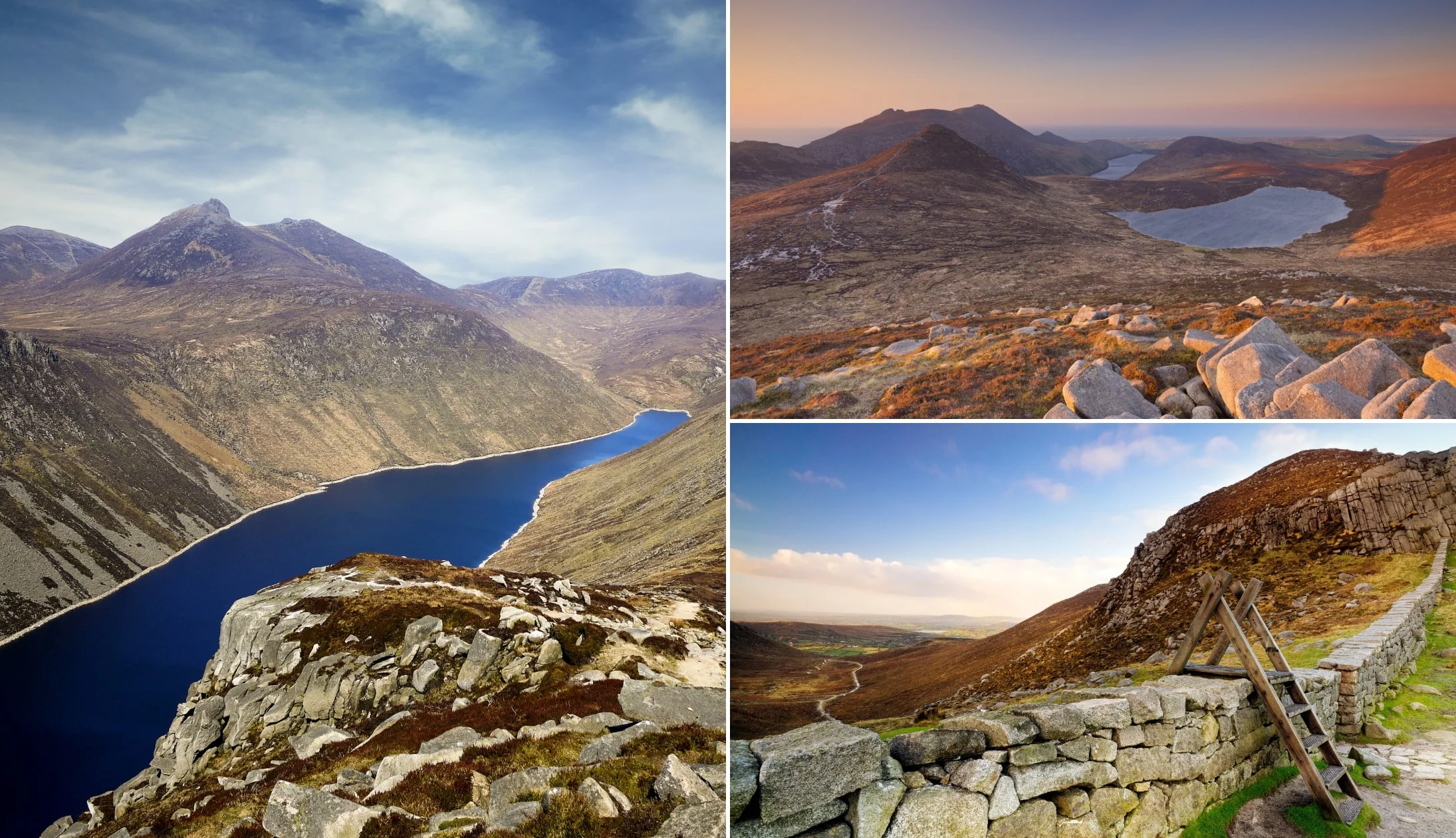
Photos via Shutterstock
Located directly south of Antrim, no trip to County Down would be complete without a tour of the stunning Mourne Mountains. Don’t miss Tollymore Forest Park and Murlough Beach, also.
See our guide to the best things to do in Down for more.
Fermanagh
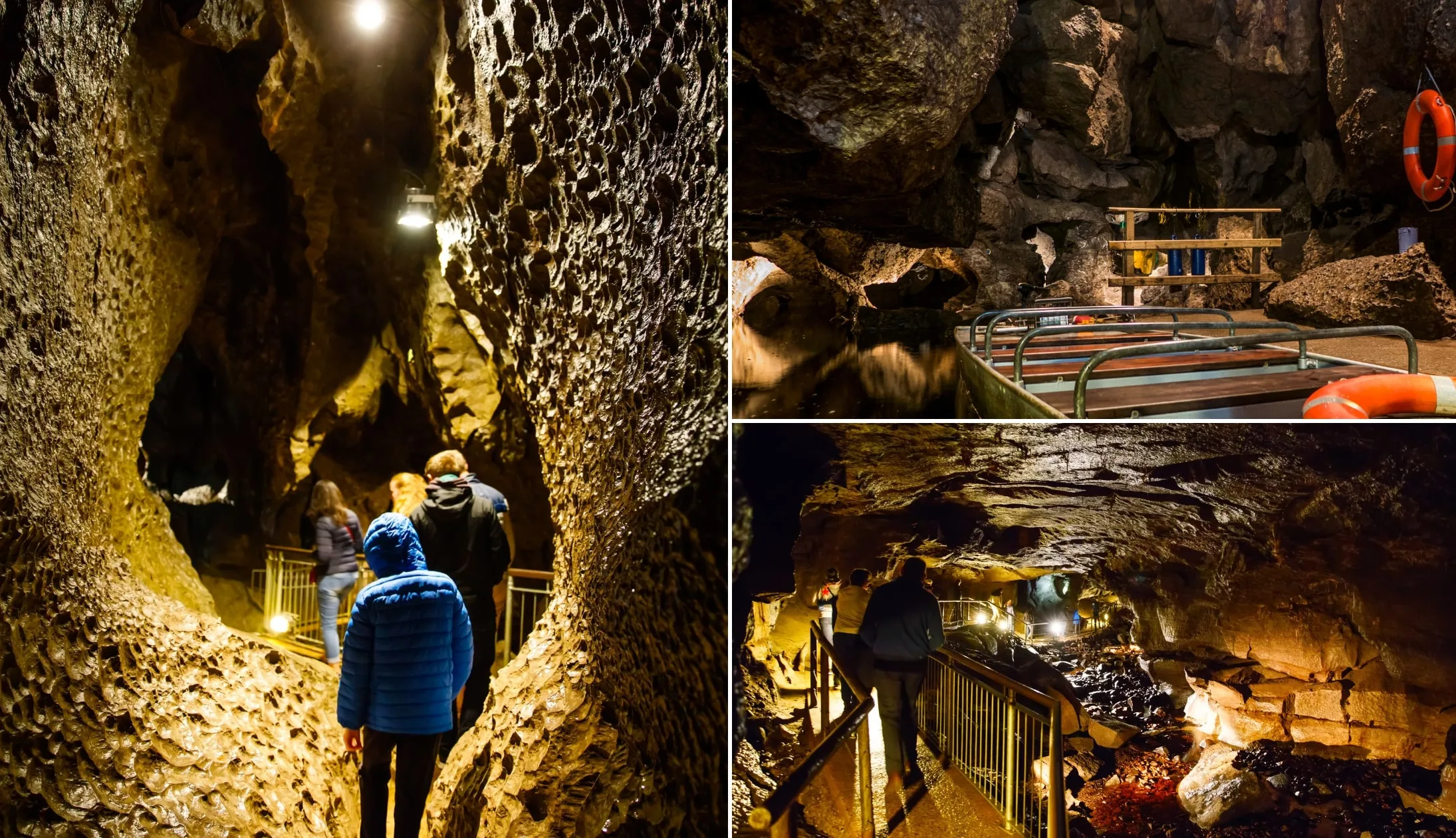
Photos via Shutterstock
Fermanagh might be Northern Ireland’s smallest county by population, but there’s loads to see. Make sure to check out the remarkable Cuilcagh Boardwalk Trail (also known as the Stairway to Heaven!).
See our guide to the best things to do in Fermanagh for more.
Derry

Photos via Shutterstock
Derry has great scenery but definitely kick off your time here in Derry City. Explore its medieval city walls before enjoying a few creamy pints at one of Derry’s many pubs or checking out the Derry Girls mural.
See our guide to the best things to do in Derry for more.
Tyrone

Photos by Emma Mc Ardle via Ireland’s Content Pool
Northern Ireland’s largest county, Tyrone, is also home to the spectacular Sperrin Mountains. Before you visit them, make sure to check out the lakes and waterfalls of Gortin Glen Forest Park.
The key differences between Northern Ireland and Ireland

Photos via Shutterstock
There are many differences between Northern Ireland and Ireland, the most notable of which is that they are two separate countries.
Here’s a quick explainer on the ‘main’ differences as of 2023.
Government
Northern Ireland is part of the UK’s political system and has a completely different head of state than the Republic of Ireland. It has a devolved power-sharing government at Stormont but ultimately answers to Westminster (the ROI’s government is in Dublin).
Currency
The currency in Ireland is the Euro (EUR), whereas, in Northern Ireland, they use the Pound Sterling (GBP), just like the rest of the UK.
When travelling, it’s always worth having the right currency on you, although it’s generally best just to pay by card.
EU membership
The Brexit Referendum has put the status of Northern Ireland under the microscope like never before. Although the UK is now no longer part of the EU, Northern Ireland shares an open border with the ROI which is a full EU member.
Because of this, NI is still part of the EU single market and customs union at the time of writing, but this is all subject to change.
Road signs
When driving in Ireland, you’ll notice the signs are bilingual, with the Irish language and English both represented, whereas in Northern Ireland, all road signs are written in the same format that you would see in mainland Britain and are all entirely in English.
Things to do in Northern Ireland
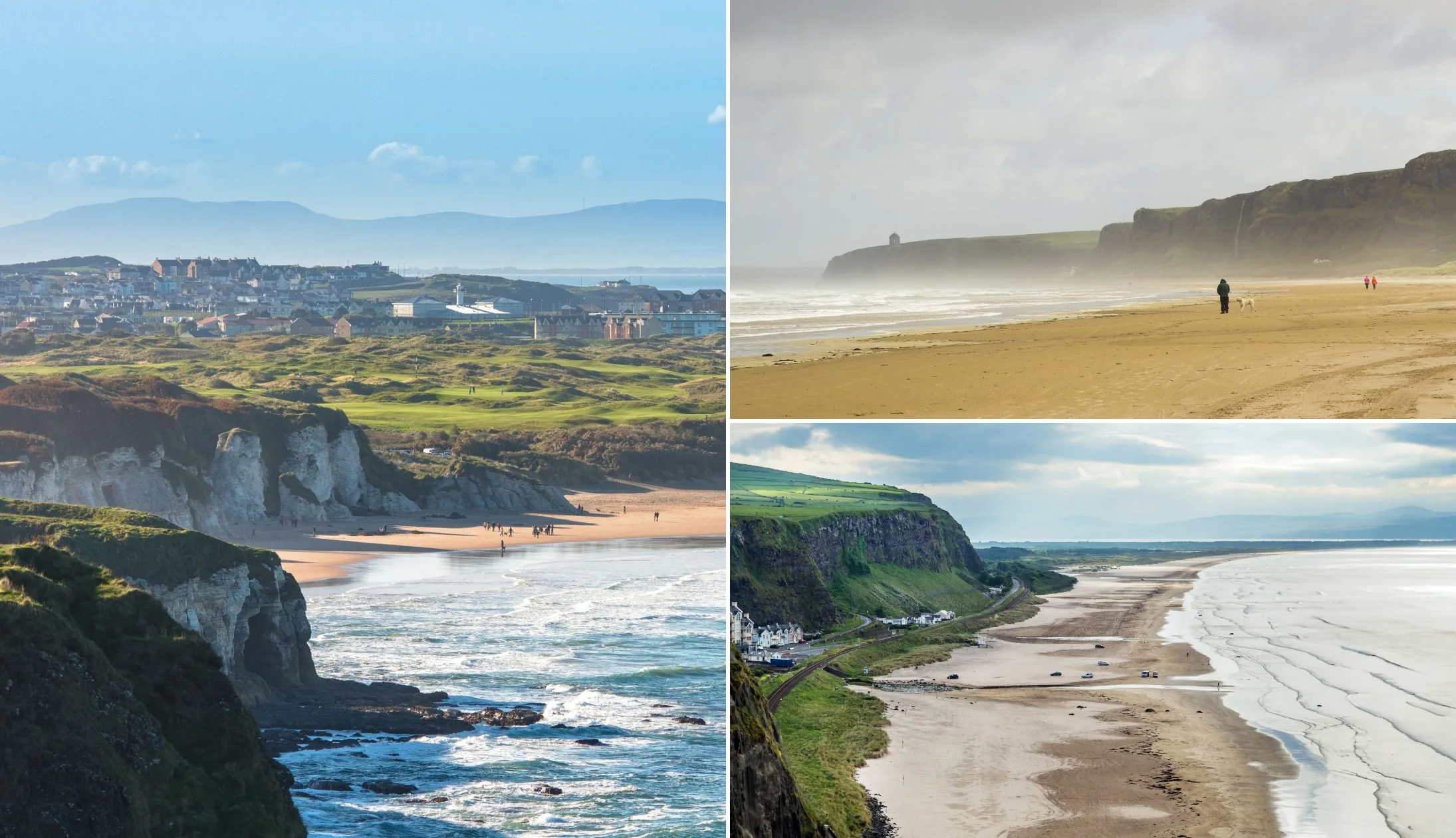
Photos via Shutterstock
There are endless places to visit in Northern Ireland.
Below, we’ll take you through some of the main attractions.
Main attractions
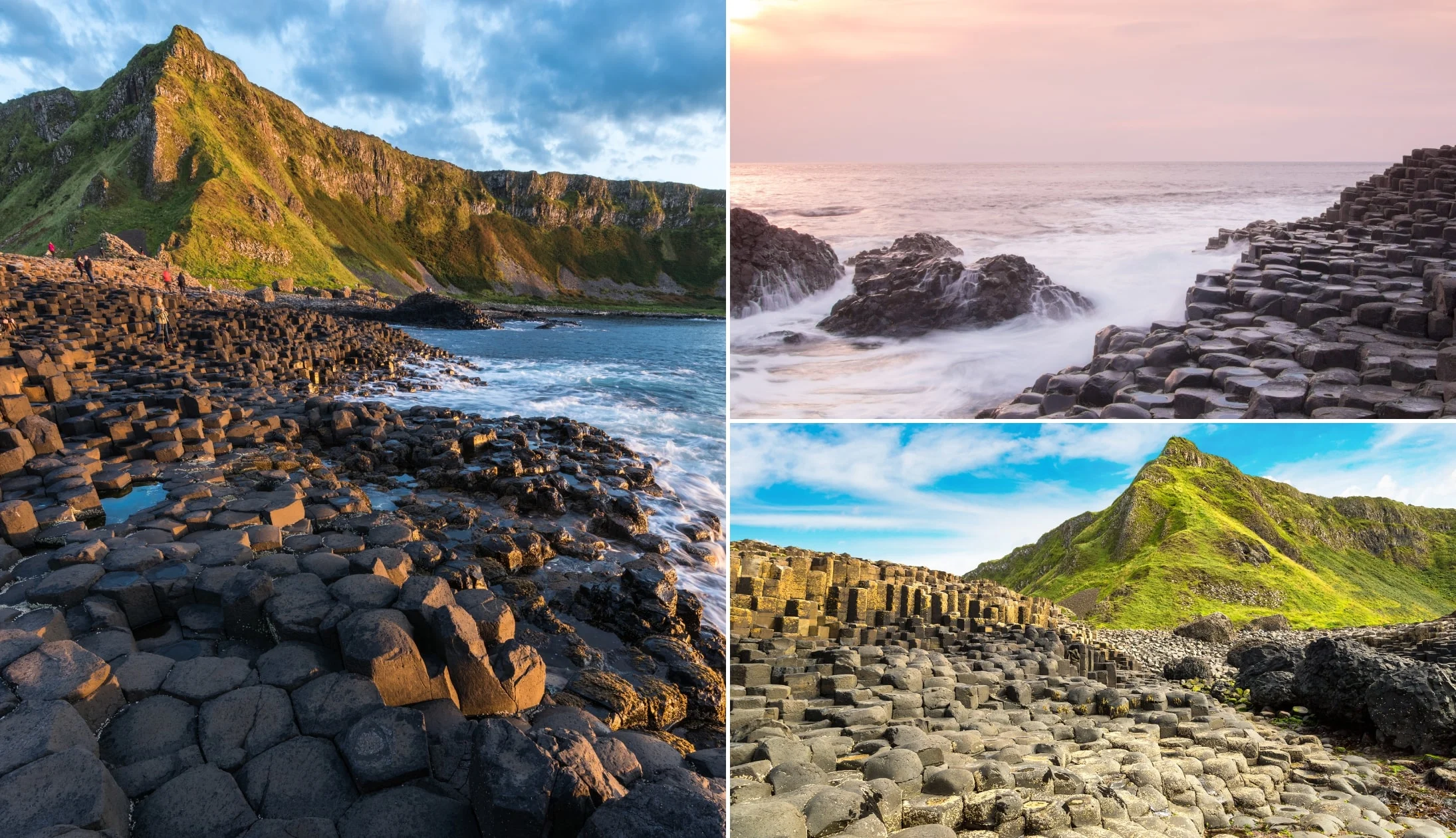
Photos via Shutterstock
Northern Ireland is full of things to do, but if it’s your first time here then you’ll want to cross off the heavy hitters first!
The North Antrim Coast is a treasure trove of historic and scenic delights that should probably be your first port of call in Northern Ireland.
The Causeway Coastal Drive is a fine way to explore this stunning part of the world. Make sure you see the Giants Causeway UNESCO World Heritage Site and Dunluce Castle.
Further east are the beautiful Glens of Antrim. Steeped in myth and home to tons of trails, wildlife and stunning views, these glens are the North at its best.
Hikes and walks

Photos via Shutterstock
Speaking of trails! From the majestic Mourne Mountains in the southeast to the Sperrin Mountains soaring up from the Tyrone and Derry border, Northern Ireland is a walker’s paradise.
There are walks and trails here for everyone, whether you’re an experienced hiker or an absolute beginner.
If you’ve just landed at Belfast, then you can give the nearby Cave Hill a spin or you can travel out to one of the higher peaks.
There are also loads of lovely forest trails to enjoy, so don’t miss the chance to wander amid the likes of Tollymore Forest or Gortin Glen Forest Park.
Belfast
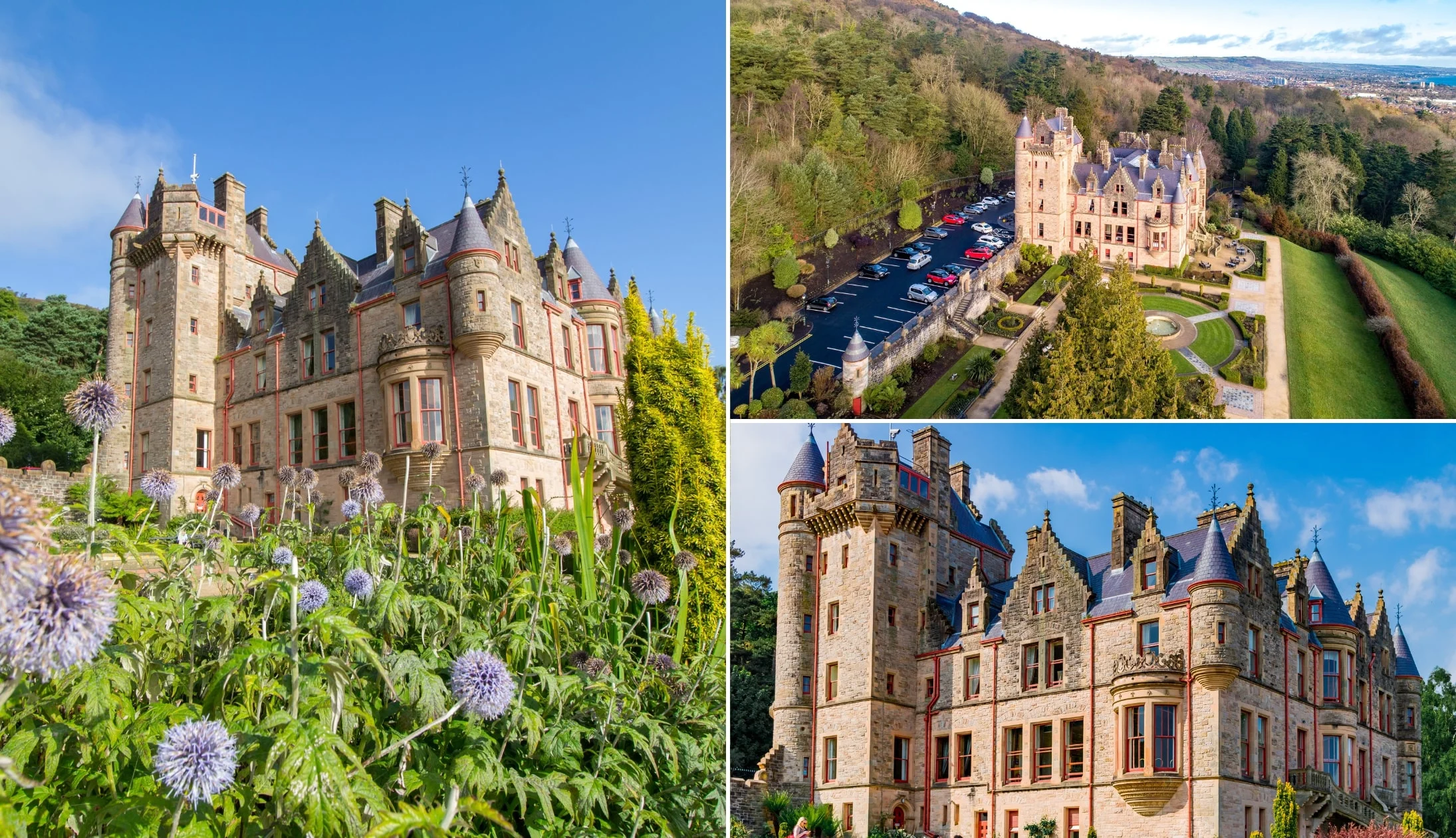
Photos via Shutterstock
One of the most unique cities in Europe (let alone Ireland!), Belfast’s turbulent history means there are few other cities like it.
And the city now embraces that history with a passion so make sure to take one of the taxi tours to learn a whole lot more from the people who were there and see the colourful murals that dot the neighbourhoods.
Belfast’s street art tours are great, too, and make sure to drop in at Titanic Belfast, an interactive experience exploring the world’s most famous ship (built in Belfast!).
Then settle in at one of the city’s fabulous pubs for a creamy pint (White’s Tavern is a belter and one of Belfast’s oldest). See our guide on things to do in Belfast for more.
Castles galore
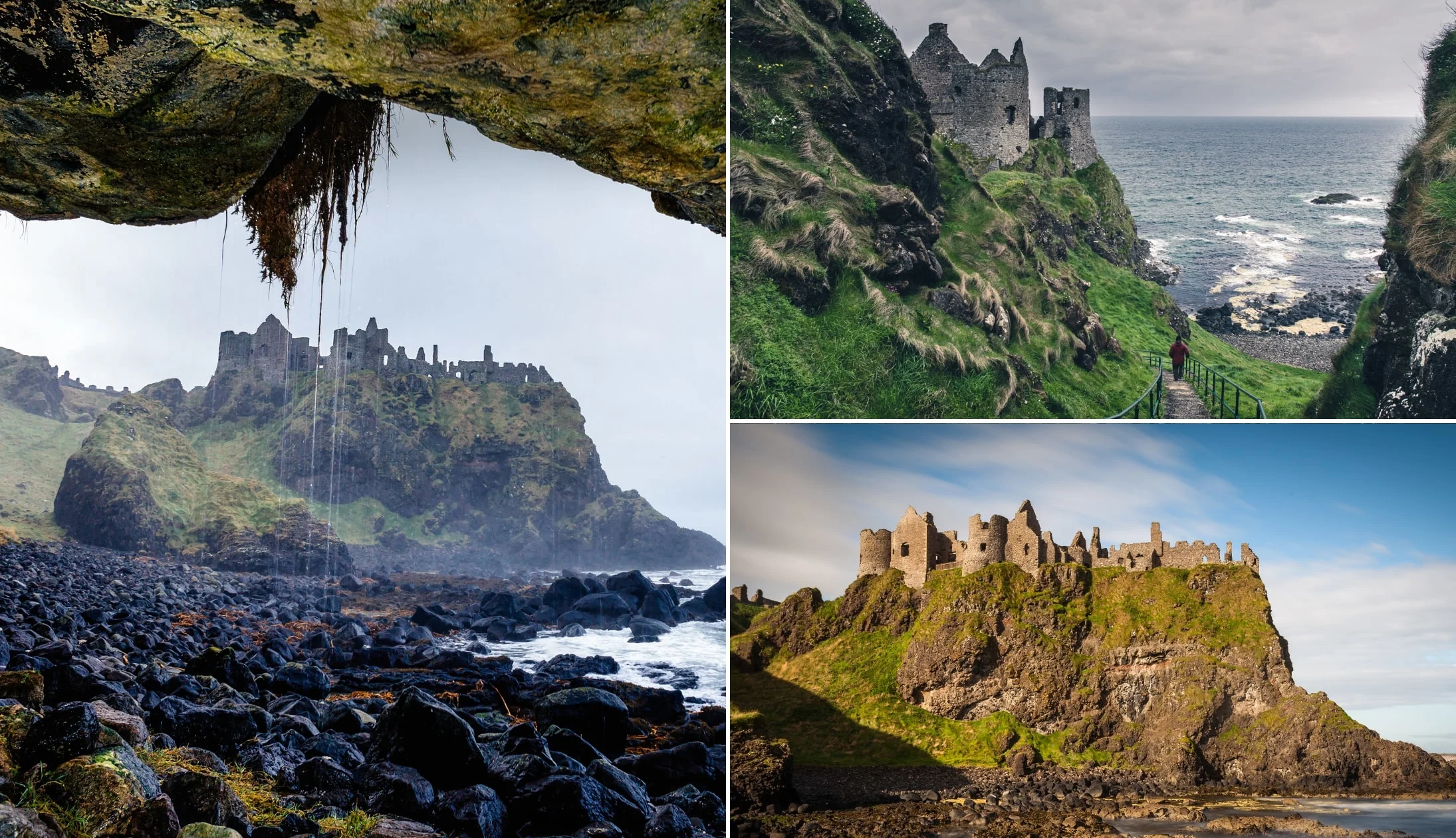
Photos via Shutterstock
If you like towers and turrets, then there are far worse places to be! From picturesque coastal fortresses to crumbling ruins, there are some magnificent castles in Northern Ireland.
Part of the awesome north Antrim coast, Dunluce Castle is probably the most well-known of the coastal castles and is just a few minutes down the road from Portrush.
Perhaps just as evocative is the ruined remains of Dunseverick Castle (which can easily be twinned with a trip to the Giants Causeway!).
Back in Belfast, the elegant Victorian Belfast Castle sits on the lower slopes of Cave Hill and gives cracking views across the city.
Game of Thrones
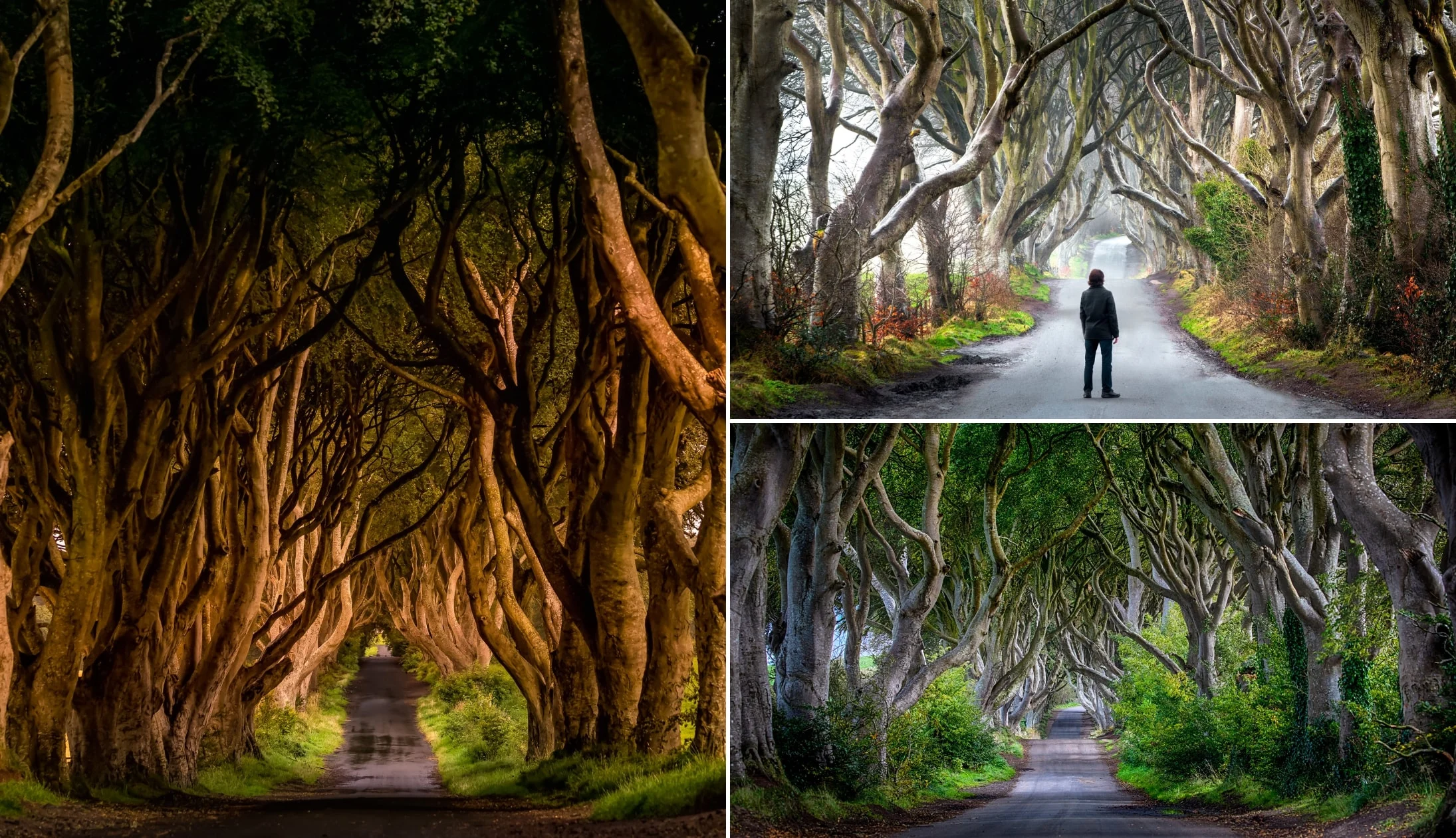
Photos via Shutterstock
If you’re a big fan of the popular HBO series, then you’ll probably already know that there are many different Game of Thrones filming locations in Northern Ireland where the ultra-popular TV show was filmed!
The producers gave this part of the world so much attention that there are now a bunch of tours of these filming locations.
But you don’t need to go on an official tour to enjoy some of the show’s famous locations! While you probably won’t have time for them all, make sure to visit Glenariff Forest Park, the Cushendun Caves and, of course, the famous Dark Hedges.
Unique attractions
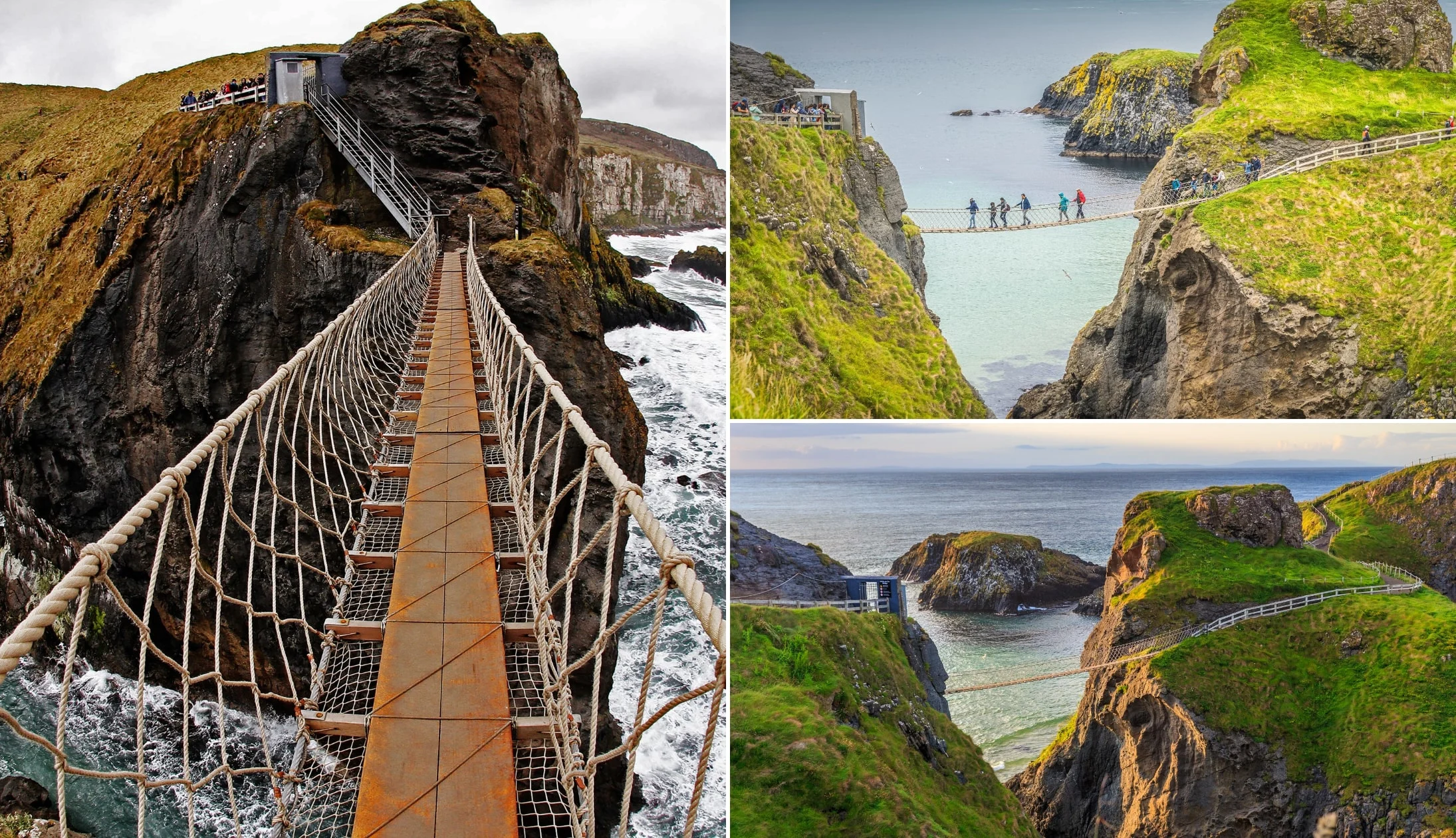
Photos via Shutterstock
Northern Ireland’s classic attractions are great, but there are a few quirkier attractions if you want to get out of your comfort zone (always a good thing, in our experience!).
The fragile-looking Carrick-a-Rede Rope Bridge might look scary, but it’s a safe and spectacular crossing on the north Antrim coast that will guarantee some fabulous photographs and memories (and some sweaty palms!).
Along a similar vein are the remarkable Gobbins Cliff Walk and the rugged Torr Head headland.
Back in Belfast, Crumlin Road Gaol is a cracking slice of macabre history with expertly presented tours.
Beaches

Photos via Shutterstock
Fancy escaping to some pristine beaches for a ramble or two? Northern Ireland has you covered and offers some fine sands for strolling with the wind in your hair!
Close to the lively seaside town of Portrush, the vast Whiterocks Beach is a superb spot for a wander and a few views. Even better, the proximity to Portrush means you can grab a coffee-to-go and take in the sea breeze – perfect for a morning ramble.
A little further down and famous for being a Game of Thrones filming location, Portstewart Strand is a stunning spot that’s great in any season. With 6,000-year-old sand dunes and tons of curious wildlife, this is far more than your average beach!
FAQs about Northern Ireland
We’ve had a lot of questions over the years asking about everything from ‘What is there to do?’ to ‘Why did they split?’.
In the section below, we’ve popped in the most FAQs that we’ve received. If you have a question that we haven’t tackled, ask away in the comments section below.
Is Northern Ireland a part of the UK?
Yes, the six counties of Northern Ireland (Tyrone, Antrim, Down, Derry, Armagh and Fermanagh) are officially part of the United Kingdom.
Is Northern Ireland worth visiting?
Yes – there are endless things to see and do in Northern Ireland, a wealth of history to be discovered and countless charming towns and villages scattered throughout its six counties.
